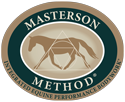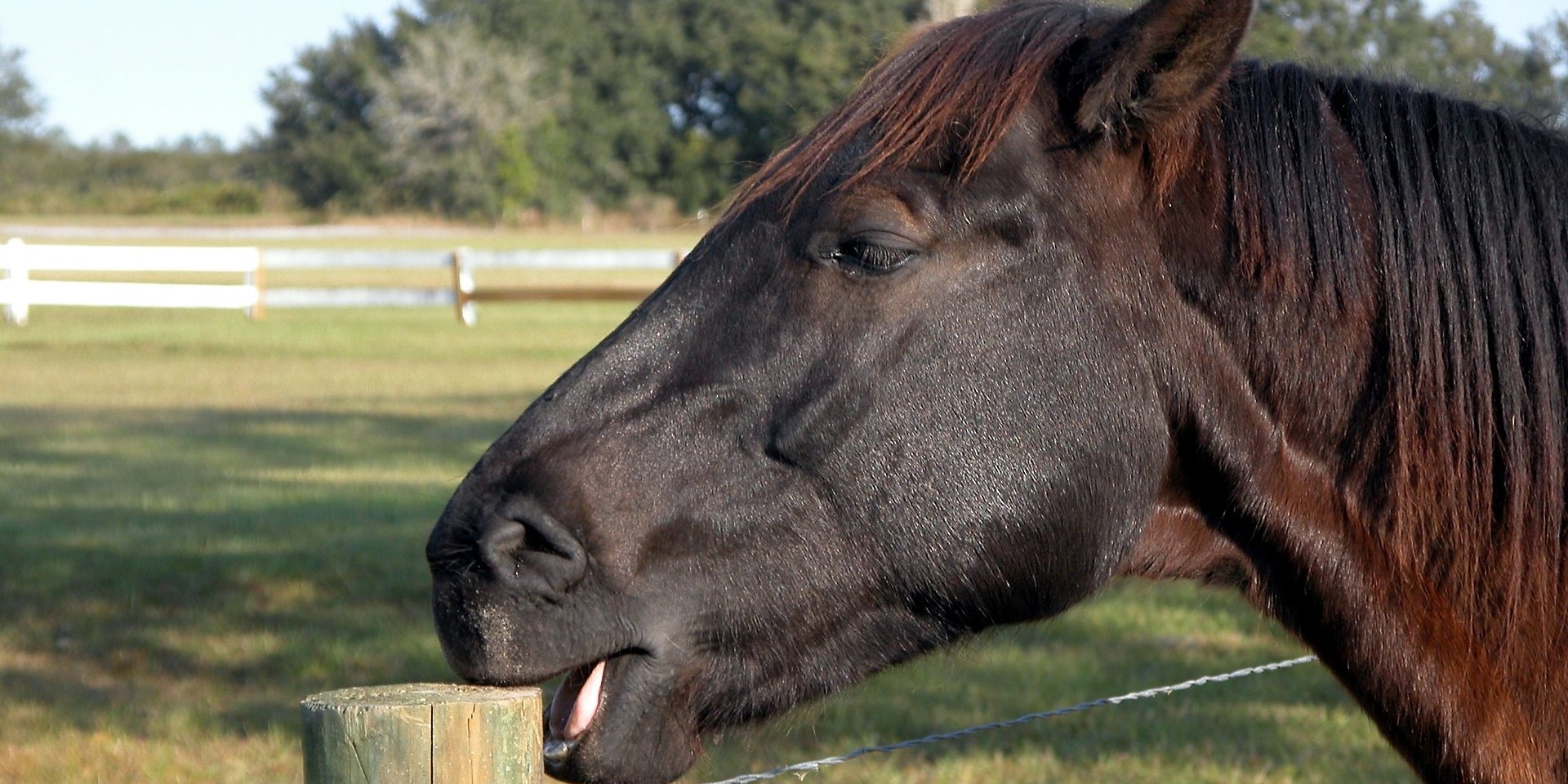Horses are amazing animals with a great capacity to adapt to different environments and situations. However, sometimes horse owners may encounter a behavior problem known as cribbing. Horse cribbing, also known as crib-biting or wind-sucking, is a behavioral issue that affects some horses where they grasp onto a solid object such as a stall door or fence with their front teeth, arch their neck, and suck in air. This behavior can cause damage to the horse’s teeth and lead to other health issues such as colic.
The causes of cribbing are not entirely understood but it is thought to be related to a horse’s diet, environment, and stress levels. Some horses may develop cribbing as a coping mechanism for boredom, anxiety, or other forms of stress. A diet high in concentrates, such as grains, can also contribute to the development of cribbing, as can a lack of turnout and social interaction.
Cribbing can also be an indication of ulcers, and a preventive consultation with a vet would always be advisable. Studies by neuroscientists have shown that cribbing releases dopamine (the feel-good chemical) in the horse’s brain. This lights up a reward center in the horse’s brain, and that’s why this behavior can be very difficult to stop.
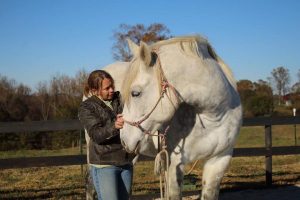
Equine bodywork can be a valuable tool in helping horses with cribbing. Several Masterson Method® Techniques can help release tension in the horse’s body and reduce its stress levels. The following techniques can have positive effects on the horse and help reduce the effects of this behavior on the body.
It is always a great idea to start with the Bladder Meridian technique because it is good to have an approach of working on the whole horse. It is a useful way to have first contact with the horse and discover his sensitivity to our touch and the pressure that helps him release tension and relax.
Other techniques that can help the horse release tension are the Front End techniques, which target releasing tension in the poll, TMJ, and neck, which are parts of the horse’s body that will most likely be revealing tension because of cribbing.
Lateral Cervical Flexion is one of the Front End techniques that aim to get lateral movement of the poll, atlas, and the rest of the vertebrae of the neck by asking for movement in a relaxed state. As a result, there’s usually an improved bending and suppleness in the poll and neck.
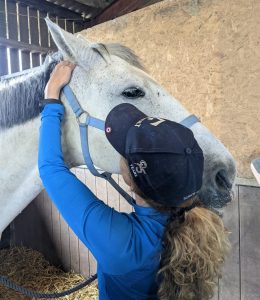 Another technique that helps obtain improved suppleness in the poll and release of tension in the entire anatomy is the Head-Up technique. The goal of this technique is to shorten and soften the muscles of the poll, atlas, and neck and allow movement in the poll in a relaxed state by allowing the horse to rest his head on our shoulder, elbow, or hand.
Another technique that helps obtain improved suppleness in the poll and release of tension in the entire anatomy is the Head-Up technique. The goal of this technique is to shorten and soften the muscles of the poll, atlas, and neck and allow movement in the poll in a relaxed state by allowing the horse to rest his head on our shoulder, elbow, or hand.
Using Search-Response-Stay-Releases (SRSR) points around the poll area, jawline groove, and TMJ point with a Light Touch will help the horse relax and give him relief from the accumulated tension because of that cribbing behavior.
Reading the responses of a cribber horse can sometimes be difficult, but not impossible. Taking into consideration the benefits of bodywork, it is worth it to keep on working and wait to see what happens. Sometimes it’s when the horse stops chewing, cribbing or fidgeting that a change occurs. Or the horse might all of a sudden break loose and start yawning, licking, chewing, and snorting. You just need to have more patience than the horse.
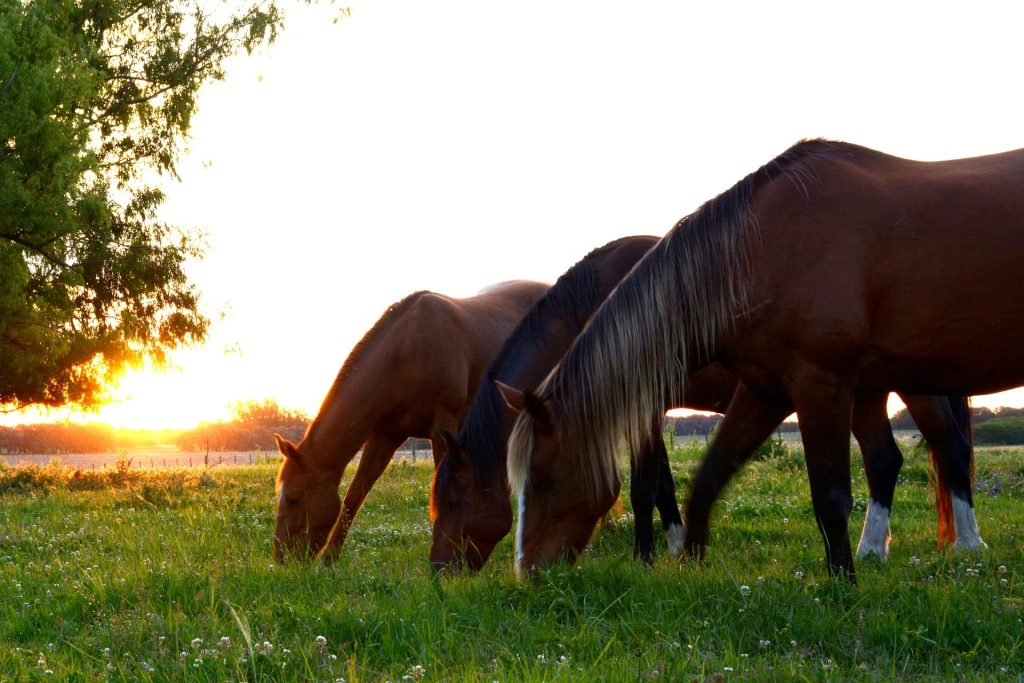
In addition to equine bodywork, other things that horse owners should try their best to do that can help a horse with this stereotypy include:
-Provide plenty of turnout time and social interaction
-Ensure a balanced diet and enough access to forage
-Give plenty of physical and mental stimulation
-Create a comfortable and safe living environment
In conclusion, cribbing is a behavior problem in horses that can be caused by a number of factors and it is hard to eradicate. The Masterson Method® techniques can be valuable tools to help cribbing horses reduce their stress levels and tension in their bodies. But it is of great importance that horse owners focus too on providing their horses with a balanced diet, plenty of turnout time and social interaction, physical and mental stimulation, and a comfortable and safe living environment to ensure that this behavior is reduced to a minimum.
Visit the Masterson Method® Store to purchase learning resources such as the Beyond Horse Massage book and DVD or Online Streaming, and visit Masterson Method® Courses to find a hands-on Seminar near you.
